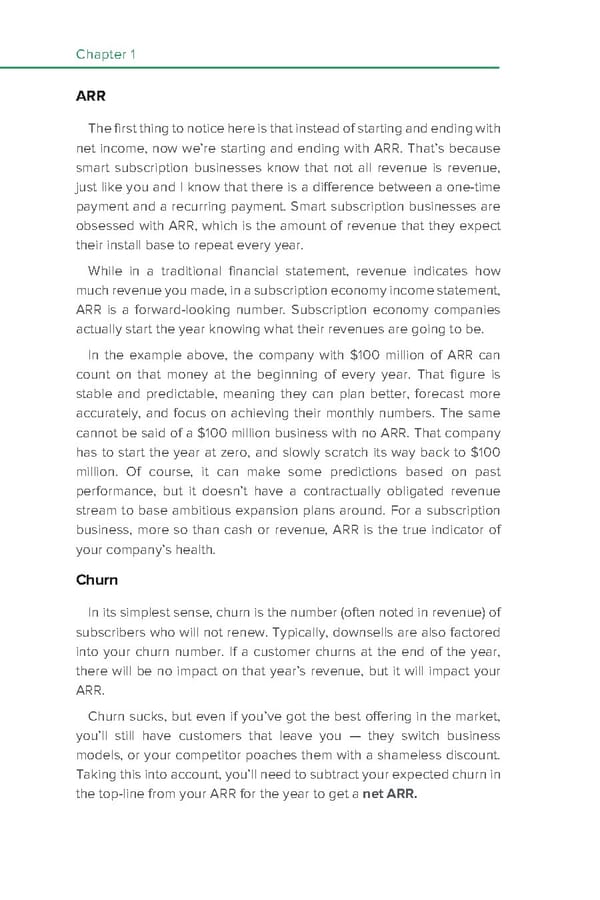Chapter 1 ARR The first thing to notice here is that instead of starting and ending with net income, now we’re starting and ending with ARR. That’s because smart subscription businesses know that not all revenue is revenue, just like you and I know that there is a difference between a one-time payment and a recurring payment. Smart subscription businesses are obsessed with ARR, which is the amount of revenue that they expect their install base to repeat every year. While in a traditional financial statement, revenue indicates how much revenue you made, in a subscription economy income statement, ARR is a forward-looking number. Subscription economy companies actually start the year knowing what their revenues are going to be. In the example above, the company with $100 million of ARR can count on that money at the beginning of every year. That figure is stable and predictable, meaning they can plan better, forecast more accurately, and focus on achieving their monthly numbers. The same cannot be said of a $100 million business with no ARR. That company has to start the year at zero, and slowly scratch its way back to $100 million. Of course, it can make some predictions based on past performance, but it doesn’t have a contractually obligated revenue stream to base ambitious expansion plans around. For a subscription business, more so than cash or revenue, ARR is the true indicator of your company’s health. Churn In its simplest sense, churn is the number (often noted in revenue) of subscribers who will not renew. Typically, downsells are also factored into your churn number. If a customer churns at the end of the year, there will be no impact on that year’s revenue, but it will impact your ARR. Churn sucks, but even if you’ve got the best offering in the market, you’ll still have customers that leave you — they switch business models, or your competitor poaches them with a shameless discount. Taking this into account, you’ll need to subtract your expected churn in the top-line from your ARR for the year to get a net ARR.
 Subscription Economics Page 9 Page 11
Subscription Economics Page 9 Page 11